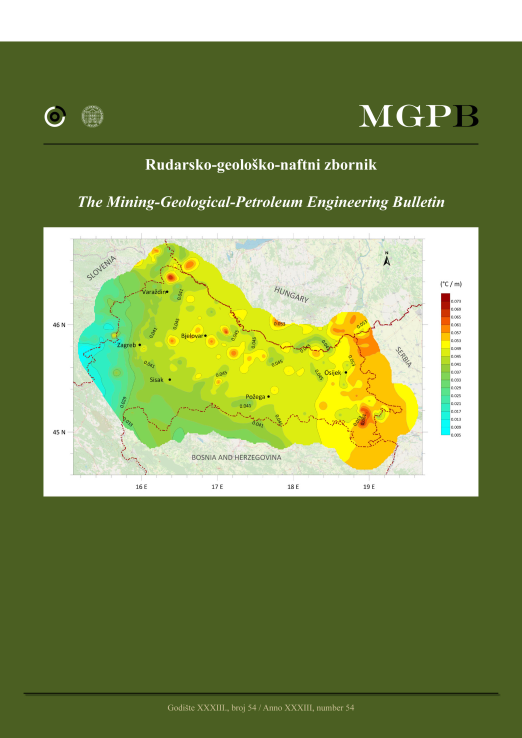Geophysical investigations of a potential landslide area in Mayoon, Hunza District, Gilgit-Baltistan, Pakistan
DOI:
https://doi.org/10.17794/rgn.2021.3.9Keywords:
GPR and ERS, Mayoon, hyperbolic reflections, debonded surface, foliated bedrockAbstract
The Mayoon landslide in the Hunza District is a slowly developed, non-catastrophic landslide that has gained its importance in the last few years after its rapid activation and fast slip rate. The area is characterized by high earthquake hazards (zone 3 with a peak ground acceleration value of 2.4–3.2 m/s2) by the Building Code of Pakistan due to frequent earthquakes. The past high earthquake activity in the area has displaced the foliated rocks towards the south and is responsible for opening the bedrock joints. The head and body of the landslide are covered by unconsolidated material and have fractures of varying lengths and widths. The non-invasive geophysical techniques, including Ground Penetrating Radar (GPR) and Electrical Resistivity Soundings (ERS), are deployed to evaluate the Mayoon landslide subsurface. The subsurface is interpreted into a two-layer model. Bright reflectors and highly variable resistivity characterize the top layer (Layer-1). This layer is associated with a loose, highly heterogeneous, fragmented material deposited under glacial settings over the existing bedrock. Hyperbolic reflections and intermediate resistivity characterize the bottom layer (Layer- 2). This layer is associated with foliated metamorphic bedrock. The hyperbolic reflections show faults/fractures within the bedrock. The extension of these fractures/faults with depth is uncertain due to decay in the GPR signal with depth. The intermediate resistivity shows the bedrock is weathered and foliated. Reflections within Layer-1 have disrupted directly above the fractures/faults suggesting a possible movement. A bright reflection between the two layers highlights the presence of the debonded surface. Loose material within Layer-1 coupled with debonding possesses a significant hazard to generate a landslide under unfavourable conditions, such as an intense rainstorm or earthquake activity.
Downloads
Published
How to Cite
Issue
Section
License
Copyright (c) 2021 authors and journal

This work is licensed under a Creative Commons Attribution 4.0 International License.
Creative Commons-BY
Authors who publish with this journal agree to the following terms:
In agreeing this form, you certify that:
- You read the ethical codex of the RGN zbornik available at journal web.
- You submitted work is your original work, and has not previously been published and does not include any form of plagiarism.
- You own copyright in the submitted work, and are therefore permitted to assign the licence to publish to RGN zbornik.
- Your submitted work contains no violation of any existing copyright or other third party right or any material of an obscene, libellous or otherwise unlawful nature.
- You have obtained permission for and acknowledged the source of any illustrations, diagrams or other material included in the work of which you are not the copyright owner.
- You have taken due care to ensure the accuracy of the work, and that, to the best of your knowledge, there are no false statements made within it.
- All co-authors of this submitted work are aware of, and in agreement with, the terms of this licence and that the submitted manuscript has been approved by these authors.
Publication licence
You retain copyright in your submitted work, according to journal license policy (CC-BY). By signing this form you agree that RGN zbornik may publish it under the publication licence. In summary the licence allows the following:
Anyone is free:
- To copy, distribute, display, and perform the work.
- To make derivative works.
Under the following conditions:
- The original author must always be given credit.
- The work may not be used for commercial purposes.
- If the work is altered, transformed, or built upon, the resulting work may only be distributed under a licence identical to this one.
Exceptions to the licence
In addition to publishing the work printed under the above licence, RGN zbornik will also enable the work to be visible online.
The journal editorial can change the licence rules anytime but it cannot retroactively restrict author(s) rights.


